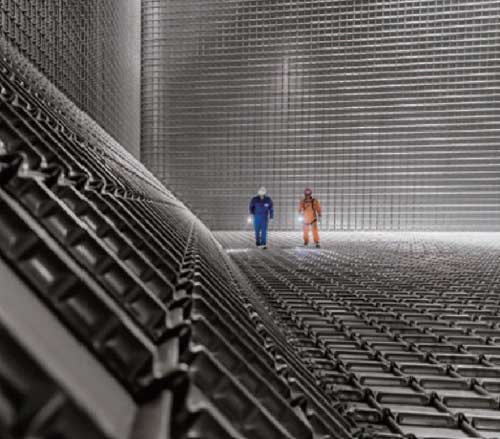Nickel Alloys in low temperature environment (marketing department of Shanghai HY Industry Co., Ltd)
As temperatures drop and even freeze, we tend to lose control over things. Both people and vehicles will encounter such a rapid and uncontrollable situation. However, nickel-containing materials can play an important role when the temperature is lowered towards lower temperatures.
Sub-zero low temperature environment material (Nickel Alloys in low temperature environment)
Austenitic stainless steels (generally 7%-25% nickel) exhibit excellent toughness at very low temperatures. Toughness refers to the ability of a material to absorb energy without being damaged, and is an indispensable requirement in many engineering applications. Structural steel has good toughness at room temperature, but as the temperature drops, the ferritic structure gradually becomes brittle, making the steel unsuitable for use at extremely low temperatures. In contrast, common nickel-containing austenitic stainless steels maintain good toughness even at liquid helium temperatures.
Another family of materials that exhibit good low temperature properties are nickel alloy steels. The material with the addition of 1.50%-9.00% nickel in the steel and proper heat treatment can obtain the necessary toughness and strength at the temperature of -60℃ to -200℃. But if there is no chromium in the mixture, these steels will not be as corrosion resistant as stainless steel.
Applications in the Arctic (Nickel Alloys in low temperature environment)
It is difficult to recruit people, weld metal and transport goods in the Arctic. The most critical factor for steel used in the Arctic is temperature, temperatures below -50°C are common, below the ductile-brittle transition temperature of most carbon-manganese structural steels used in Arctic oilfield construction.
Other factors in the oil and gas industry that determine arctic material selection include corrosion resistance and weldability. The former factor is less important in structural applications than the extraction and transportation of corrosive oil and gas. The weld must maintain a high fracture toughness. If the toughness of the weld is low, fracture will occur regardless of the quality of the base metal.
Another example is the scientific research infrastructure in Antarctica. A Belgian research station was built in Antarctica in 2008. The standing surface of the scientific research is made of 1.50mm 304L (UNS S30403) stainless steel plate. This material was chosen because austenitic stainless steel (304L) still exhibits sufficient strength and toughness at temperatures well below -60°C.
Application in the field of liquefied natural gas (Nickel Alloys in low temperature environment)
With the ever-increasing energy demand and increasing importance of energy transport and storage, liquefied natural gas (LNG) is attractive due to its advantages in volumetric energy density ratios. In natural gas pipelines, the liquid volume of natural gas is approximately 600 times smaller than the gaseous volume. The liquefaction process enables it to be transported to places without natural gas pipelines, and even to use natural gas as a transportation fuel. But none of this would be possible without nickel, as natural gas only becomes liquid at temperatures below -163°C.
As mentioned above, the choice of austenitic and nickel alloy steels is the best solution for manufacturing storage and transport vessels and handling LNG at such low temperatures.
Tanker Design (Nickel Alloys in low temperature environment)
LNG tankers mainly sail from Qatar and Australia to regions with high energy demands, such as Japan, China and South Korea. Modern tanker designs allow LNG to be contained in bimetallic membranes with insulating linings, thereby optimizing the use of hull space. Waffle-style (to accommodate expansion and contraction) thin layers of 304L stainless steel or thinner and flattened Alloy 36 (K93600, a 36% nickel alloy with lower thermal expansion) are specifically used for these cargo containment systems ,As shown in Figure 1.


